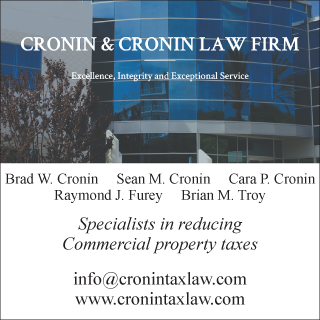News:
Long Island
Posted: December 11, 2012
Properties damaged by Hurricane Sandy may be eligible for property tax relief
The impact of Hurricane Sandy throughout the state of New York was widespread and devastating. While relief efforts have been and continue to be remarkable, many have experienced damage, including property damage, which will not be remedied until 2013 and beyond. In the hardest-hit areas, whether rebuilding will happen at all remains an open question. Properties damaged by Hurricane Sandy may be eligible for significant assessment reductions, resulting in a substantially lower tax burden. Accordingly, a reduction in assessment must be sought on properties that have sustained significant damage.
The Real Property Tax Law calls for equitable distribution of the assessment roll based on the condition of each property on taxable status day. Specifically, Section 302 of the Real Property Tax Law requires the taxable status of real property be determined annually according to its condition and ownership as of taxable status date. Taxable status date is the critical issue here. This is a certain and specific "as of" date at which time the property's condition is examined and assessed. Effectively, on the taxable status date, a "snapshot" is taken of the property which provides the physical status of the structure for that tax year.
This prevents constant adjustments to the assessment roll and partial year assessments, which would become a logistical nightmare without a singular annual date that matters in regards to what physical structure is valued for that tax year. For example, if a house was 50% constructed as of taxable status date, it should only be valued with a partial assessment as being 50% complete for that tax roll, despite the fact that construction may be completed shortly after taxable status date.
Even within the state of New York, taxable status date can vary given a property's location. For instance, taxable status date in Nassau County is January 2, 2013, whereas Suffolk County's taxable status is on March 1, 2013. Indeed, even within these counties, many villages and cities have their own taxable status dates of January 2nd or earlier. For property owners who have incurred significant damage as a result of Sandy, understanding their local taxable status dates is critical in determining the appropriate course of action.
For those properties damaged or destroyed by Hurricane Sandy, it is crucial that the assessment roll accurately indicate the status of damaged property on this year's taxable status date. A tax bill that does not reflect the harm caused by Sandy will provide an additional burden to already suffering property owners.
To assure appropriate reduction in their assessment, property owners should thoroughly document the damage that has occurred and take detailed photographs of their property. This is particularly vital in cases where a property may appear unharmed from the outside, but must undergo significant renovation before habitability is restored, such as in the case of water damage.
Communication with your tax counsel is also essential. There are currently a number of bills pending approval that seek to assist Sandy victims. This legislation mirrors laws passed in the aftermath of Hurricane Irene and Tropical Storm Lee. Those pieces of legislation were specifically tailored to those victims that were "catastrophically impacted" by the storms and offered a wide variety of relief to those affected by those storms. Tax counsel will be able to provide you with updates on current developments regarding similar laws that have been drafted in response to Sandy.
As we move further away from Sandy's initial impact, it is important to remember that the properties that were struck the hardest continue to create ongoing problems for homeowners and businesspeople throughout New York. Many across the country were generous in their outpouring of support, financial and otherwise, in response to the initial physical and human damage caused by the storm. However the arduous process of recovery has only just begun. As we move into the next phase of recovery, the owners of these hardest-hit properties are the ones that continue to require the most assistance recovering from Sandy. Rather than further hinder a property already coping with exceptional burdens, tax counsel and the assessor should work together and move quickly to assist property owners in ensuring that accurate assessments are reflected for the victims of property damage caused by Hurricane Sandy.
Brad Cronin, Esq., is an attorney and partner and Sean Cronin, Esq. is an attorney at Cronin, Cronin & Harris, P.C., Mineola, N.Y.
Tags:
Long Island
MORE FROM Long Island
Suffolk County IDA supports expansion of A&Z Pharmaceuticals
Hauppauge, NY The Suffolk County Industrial Development Agency (IDA) has granted preliminary approval of a financial incentive package that will assist a manufacturer in expanding its business by manufacturing more prescription (Rx) pharmaceuticals in addition to its existing over-the-counter

Quick Hits
Columns and Thought Leadership

The evolving relationship of environmental consultants and the lending community - by Chuck Merritt
When Environmental Site Assessments (ESA) were first part of commercial real estate risk management, it was the lenders driving this requirement. When a borrower wanted a loan on a property, banks would utilize a list of “Approved Consultants” to order the report on both refinances and purchases.









.jpg)